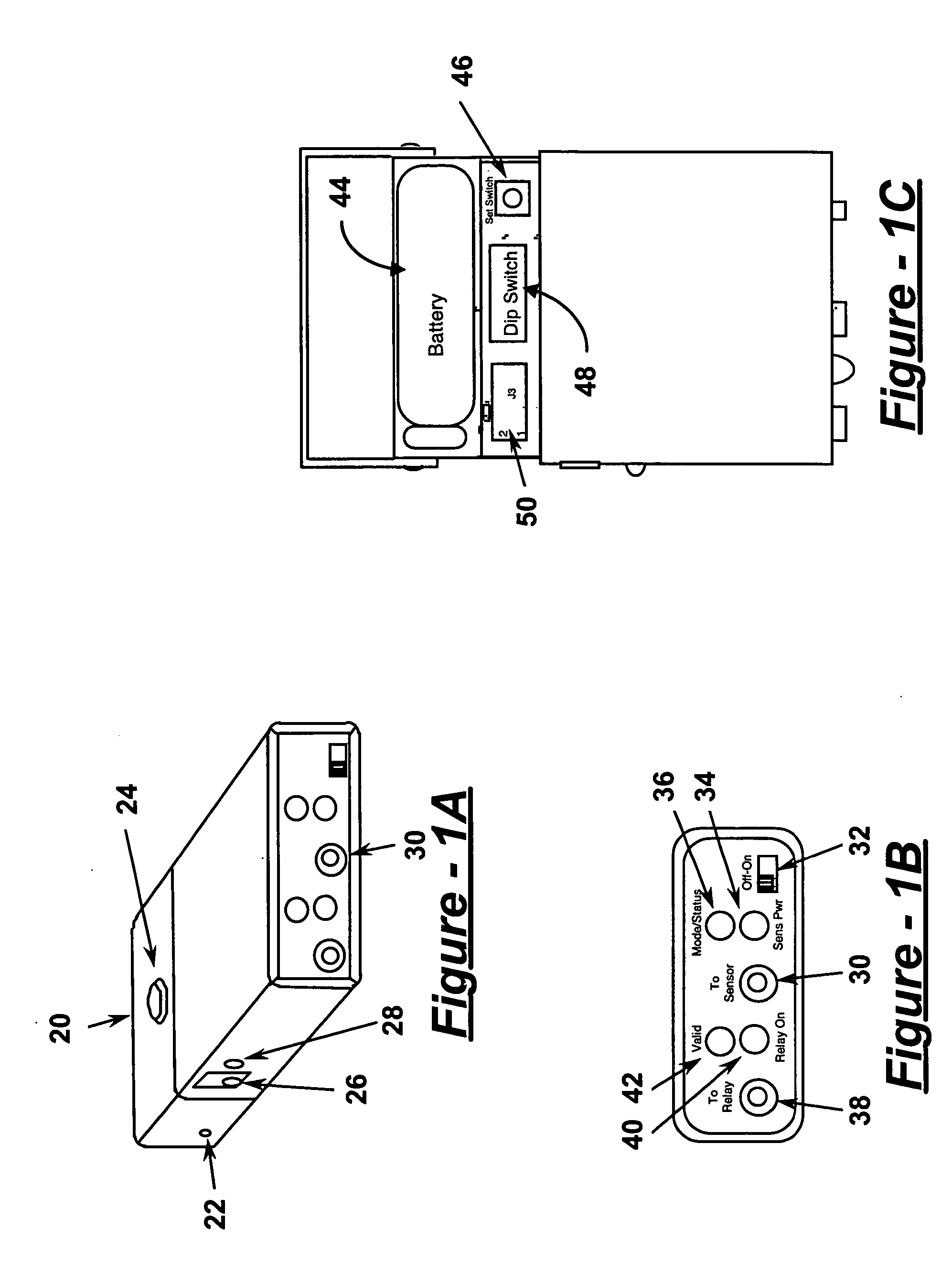Digital, self-calibrating proximity switch
a digital, self-calibration technology, applied in the field of proximity switches, can solve the problems of inability of the sensor, subject to non-purposive triggering, inability to target the sensor, etc., to facilitate communication and/or actuation of devices, facilitate tracking of signal characteristics over time, and compact packaging of a working proximity switch
- Summary
- Abstract
- Description
- Claims
- Application Information
AI Technical Summary
Benefits of technology
Problems solved by technology
Method used
Image
Examples
Embodiment Construction
[0030] The following description of the preferred embodiments is merely exemplary in nature and is in no way intended to limit the invention, its application, or uses.
[0031] Referring to FIG. 1A, a preferred embodiment of a digital switching apparatus of the present invention includes a hinged cover 20 having a hinge 22 and a latch release 24. The apparatus also has a charger jack 26, a charge status LED 28, and a sensor jack 30 adapted to connect to several, optional sensor configurations, preferably via a standard tip-ring-sleeve (TRS) connection. Examples of types of sensors that can connect to sensor jack 30 include proximity sensors, EMG sensors, force sensing resistors, visible light and shadow sensors, skin conductivity sensors, capacitive touch sensors, and piezo sensors.
[0032]FIG. 1B illustrates a front panel of the switching apparatus, including sensor jack 30, a power switch 32, a “sensor power” LED 34, and a “mode / status” LED, 36. A relay jack 38 supplies an output sig...
PUM
 Login to View More
Login to View More Abstract
Description
Claims
Application Information
 Login to View More
Login to View More - R&D
- Intellectual Property
- Life Sciences
- Materials
- Tech Scout
- Unparalleled Data Quality
- Higher Quality Content
- 60% Fewer Hallucinations
Browse by: Latest US Patents, China's latest patents, Technical Efficacy Thesaurus, Application Domain, Technology Topic, Popular Technical Reports.
© 2025 PatSnap. All rights reserved.Legal|Privacy policy|Modern Slavery Act Transparency Statement|Sitemap|About US| Contact US: help@patsnap.com



